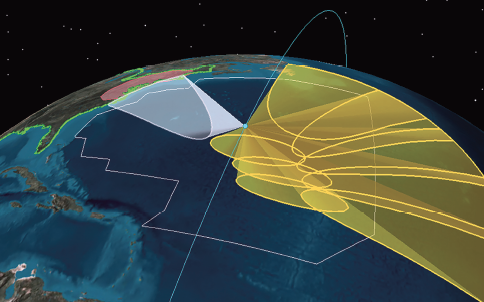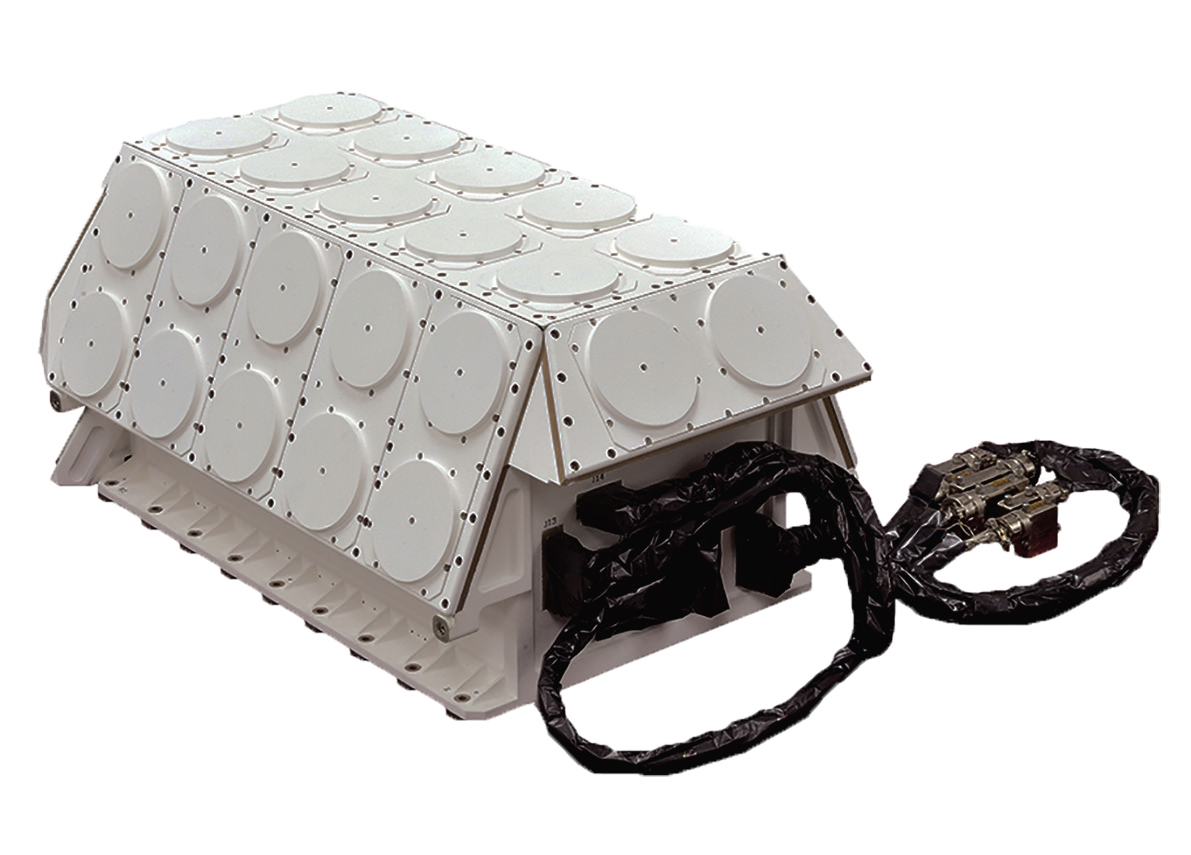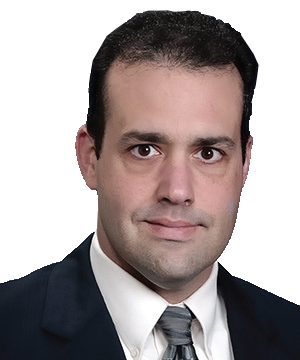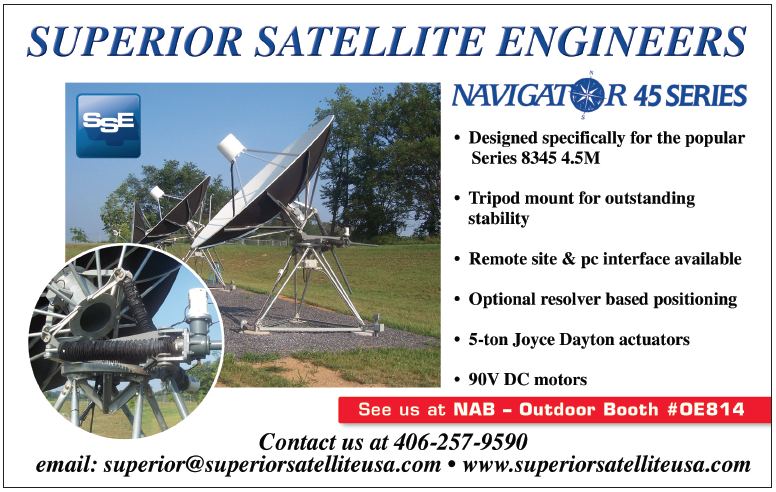Military and consumer users demand wider bandwidth systems to support a broad range of services from higher data-rate communications to anti-jamming radars.

Figure 1. Notional View of Spot Beams over the Earth’s Surface.
Phased array technology, which improves spectrum management, can increase bandwidth to help meet user demand. However, this technology comes at a budget busting price. A technology breakthrough is needed that provides sufficient bandwidth to enable mission success within budget.
Enter elemental digital beam forming (DBF), a new technology that allows cost effective deployment of phased array antennas.
Elemental DBF delivers cost-effective spectrum management for military and commercial customers. Analog systems, such as active electronically scanned array (AESA) radars, employ a costly and complex radio frequency beam former network to combine thousands of elements into just a handful of beams. However, in a fully digital system, the thousands of elements are digitized—allowing 10 or even 100 beams to be simultaneously formed—which can dramatically increase coverage and reduce interference.
This technology enables high numbers of radio signal ‘spot beams’ to be directed towards a specific area—for example, on the Earth’s surface. To visualize this technology—imagine each of the spot beams as a flashlight, as shown in Figure 1. DBF allows you to employ as many flashlight beams as you need for coverage, with the ability to point the flashlight beams anywhere in the field of regard. As with traditional phased array technology, the antenna does not have to move as it is pointed electronically.
From a communication system mission perspective, this means a large number of agile spot beams provide better coverage. For military radars, this means avoiding an adversary’s jamming or even jamming the adversary in return.
But that’s just the tip of the iceberg.
The potential is almost infinite.
Automatic Phased Array Calibration
A driving barrier for extensive adoption of elemental DBF is the cost per unit. Emerging techniques, such as automatic calibration, will allow such advanced antennas to reach the market at a fraction of the cost. Automatic calibration improves system performance by correcting for age-related degradation or calibration errors. This will help reduce the recurring cost of electrical components with the ability to relax component specifications.
Harris has developed and deployed narrowband automatic calibration antenna solutions and is now expanding to wideband applications. The method uses an internal calibration network to illuminate and correct the electronic channels before forming the beam. The result is a real-time mathematical model to calibrate the beam forming network which allows accurate pointing and shaping.
This injection-based approach does not require an external signal. This application will be beneficial in instances such as use by a stealth aircraft, which will be able to calibrate its sensors without any telltale electronic signature.

Figure 2. Aireon Hosted Payload on the Iridium NEXT Space Vehicle.
Current Narrowband Phased Array in Operation
Harris developed and is manufacturing Aireon, LLC’s 81 space-based hosted payloads for its Automatic Dependent Surveillance–Broadcast (ADS–B) system (see Figure 2). ADS-B will revolutionize air traffic management by improving situational awareness, optimizing flight paths and altitudes, and increasing operational and fuel efficiency for airlines, while reducing infrastructure costs for air navigation service providers.
The Harris solution employs a narrowband elemental DBF phased array to enable efficient beam pointing, which is a critical design element to address signal interference prevalent in the air-to-space channel. To optimize performance over the ADS-B payload mission life, Harris engineers used one of their narrowband automatic calibration methods. The method is very efficient in terms of size, weight, and power for this hosted payload (shown in Figure 3). The architecture allows 1) antenna patterns to be completely software driven from the ground and 2) the system to optimize the beam pattern at any time during the mission.

Figure 3. Aireon Hosted Payload.
Future Wideband Phased Arrays in Operation
For wideband applications, such as radar and electronic warfare (EW), the applications for DBF are enormous. DBF enables a high number of beams allowing a single antenna to perform radar scanning, electronic attack, and communications simultaneously.
Cost effective calibration is the key to bring this technology to market. Automatic injection calibration is a method to achieve this. While current systems have some of these abilities, the new architecture will optimize size, weight and power to reduce costs.
This technology will also revolutionize the satellite industry because elemental digital phased array antennas allow a satellite’s coverage area to be flexible. In addition, this architecture increases the number of spot beams; providing greater coverage.
Revolutionary Technology to Become Commonplace
Elemental DBF phased array antennas are the future. Harris’ continued innovation and investment in auto calibration will allow the company to cost-effectively bring this technology to the wideband phased array market. It is only a matter of time before this revolutionary technology will become commonplace. This will result in satellites and radars that are lighter, cheaper and perform far better than any system operating today.
All that is required is innovation.

Josh Bruckmeyer is a system architect at the Harris Corporation. He has 14 years of experience developing satellite payload and software defined radio (SDR) systems, with a specialization in signal processing and phased array antenna systems. Josh received his bachelor’s degrees in electrical engineering and computer engineering from the University of Florida, his master’s degree in electrical engineering from Florida Institute of Technology, and is currently pursuing a PhD in electrical engineering at the Florida Institute of Technology.


